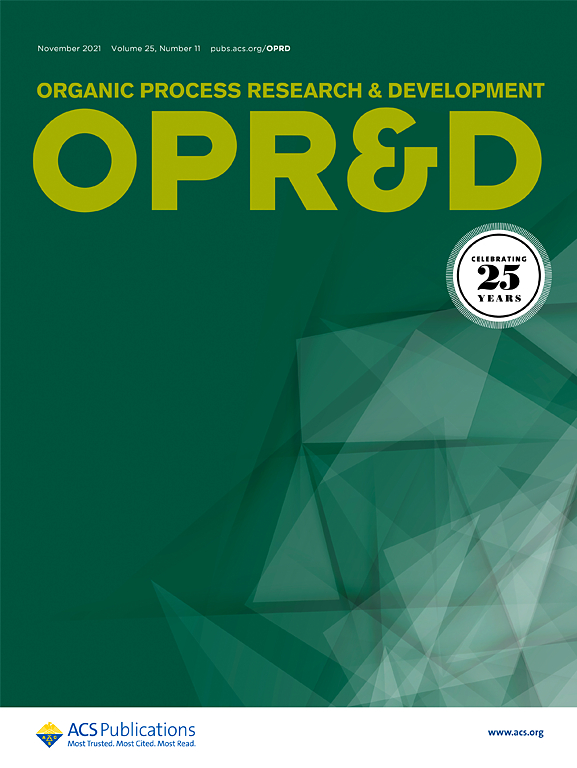立体控制第一代RIPK1抑制剂GDC-8264的合成
IF 3.1
3区 化学
Q2 CHEMISTRY, APPLIED
引用次数: 0
摘要
我们报道了一种高效的、立体控制的、无色谱的第一代制造工艺GDC-8264(1),一种RIPK1抑制剂。关键步骤包括非对映选择性还原胺化、三唑缩合、醇脱氧氟化和后期Weinreb酮形成。12步工艺成功生产了3.5 kg GDC-8264(1),总收率为19%,HPLC纯度为99.2 A %, ee为99%,dr为99.9:0.1,支持早期临床研究。本文章由计算机程序翻译,如有差异,请以英文原文为准。

Stereocontrolled First Generation Synthesis of RIPK1 Inhibitor GDC-8264
We report an efficient, stereocontrolled, and chromatography-free first-generation manufacturing process for GDC-8264 (1), a RIPK1 inhibitor. Key steps include a diastereoselective reductive amination, a triazole condensation, an alcohol deoxyfluorination, and a late-stage Weinreb ketone formation. The 12-step process successfully produced >3.5 kg of GDC-8264 (1) in 19% overall yield with 99.2 A % HPLC purity, >99% ee, and >99.9:0.1 dr to support early stage clinical studies.
求助全文
通过发布文献求助,成功后即可免费获取论文全文。
去求助
来源期刊
CiteScore
6.90
自引率
14.70%
发文量
251
审稿时长
2 months
期刊介绍:
The journal Organic Process Research & Development serves as a communication tool between industrial chemists and chemists working in universities and research institutes. As such, it reports original work from the broad field of industrial process chemistry but also presents academic results that are relevant, or potentially relevant, to industrial applications. Process chemistry is the science that enables the safe, environmentally benign and ultimately economical manufacturing of organic compounds that are required in larger amounts to help address the needs of society. Consequently, the Journal encompasses every aspect of organic chemistry, including all aspects of catalysis, synthetic methodology development and synthetic strategy exploration, but also includes aspects from analytical and solid-state chemistry and chemical engineering, such as work-up tools,process safety, or flow-chemistry. The goal of development and optimization of chemical reactions and processes is their transfer to a larger scale; original work describing such studies and the actual implementation on scale is highly relevant to the journal. However, studies on new developments from either industry, research institutes or academia that have not yet been demonstrated on scale, but where an industrial utility can be expected and where the study has addressed important prerequisites for a scale-up and has given confidence into the reliability and practicality of the chemistry, also serve the mission of OPR&D as a communication tool between the different contributors to the field.

 求助内容:
求助内容: 应助结果提醒方式:
应助结果提醒方式:


